- 9min
- 10998
- an opinion
Felling trees and chopping wood are some of the most common chainsaw uses but the functions of these versatile power tools do not have to be limited to this. not anymore!
Chainsaws, whether electric, gasoline, or battery-operated, work by transferring the rotational power to a series of cutting teeth, wrapped around a guide bar.
Supercharge your sales with a trusted chainsaw supplier by your side!
These power tools are easy-to-use and enable users to make fast and efficient cuts. They are also versatile and can be used on many different materials. These advantages have contributed to the growing popularity of chainsaws.
How To Use a Chainsaw?
Using a chainsaw can be a dangerous and delicate thing to do. Before starting a chainsaw with its pull cord, you should be familiar with the potential risks and learn all the useful tips and techniques:
Choose a model that best fits your needs:

If you need to take care of a demanding cutting task, go for heavier gas-powered chainsaws that are more powerful but if you have access to a power outlet and can’t stand too much noise, choose an electric model.
Read More: Best Chainsaws
Guide bar length is also an important factor to consider; longer bars are the best choice for larger timbers and thicker pieces of wood as they need more torque to rotate and smaller bars should be used when it comes to cutting smaller trees and branches.
No matter what your mission is, always pick a chainsaw with an automatic lubricating system for an easier and smoother cutting operation, an anti-vibration system for less hand fatigue and more convenience, an efficient safety break to prevent injuries, and an environment-friendly exhaust system design to reduce fuel consumption.
Read The Manual Carefully
Before using a chainsaw, it is important to go through its manual carefully. There you can find installation and general safety instructions, product characteristics, and solutions to any potential problem.
Check the Tool
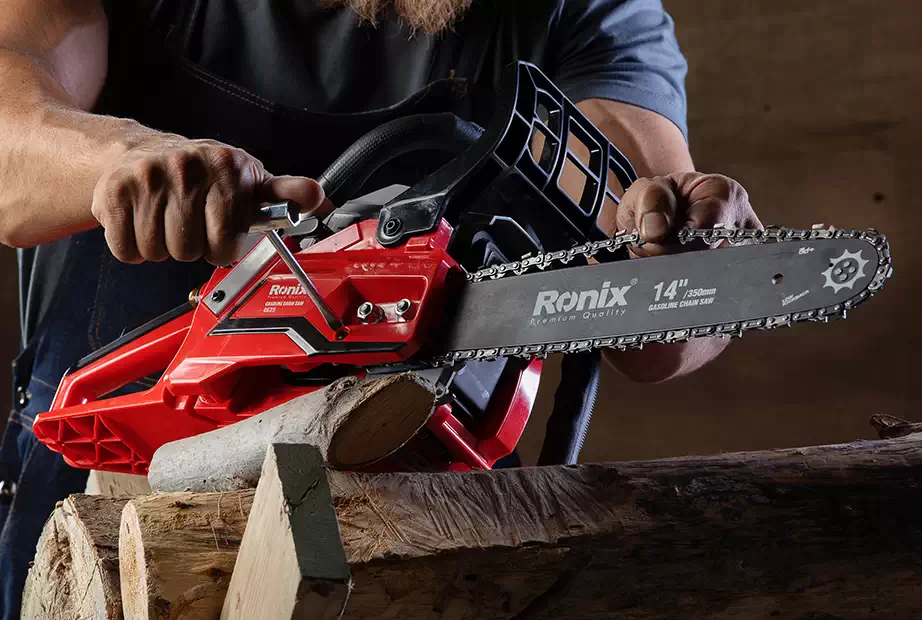
Asafe and sound chainsaw use starts with checking the tool. Before anything, you should make sure that all the parts including the bar and chains are adjusted, sharpened, and lubricated properly. Inspect the tool for any fuel leaks or damaged parts and assure that there are no loose parts or bolts.
Check the Surroundings
To start the chainsaw and get the job done, it’s really important to be in a safe space. This means being aware of power lines above your head and obstacles, cars, and nearby buildings, and being able to escape falling tree trunks or large branches.
Start The Saw and Make the Cut
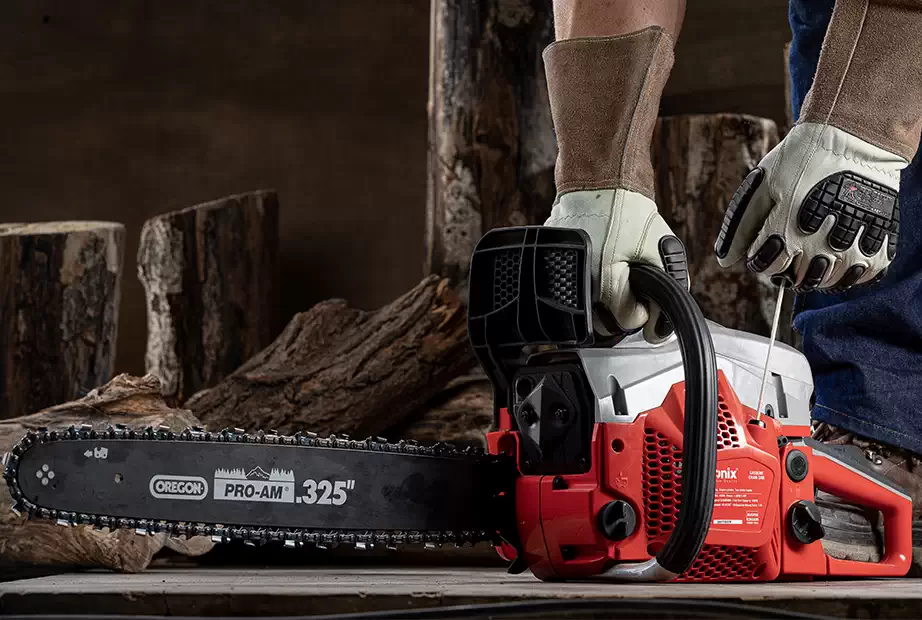
You should always begin by wearing all the essential safety equipment. Although the starting procedure depends on the type and model of your chainsaw, in general, you should take a proper stand in front of the workpiece and start the motor. Before anything, you should activate the chain brake and pull the choke lever out. After pressing the oil feeder a few times, the fuel becomes visible and then you can put the saw on a firm and flat surface and pull the starter handle with the right hand. Let the chainsaw warm up for 30-60 seconds and then release the chain brake.
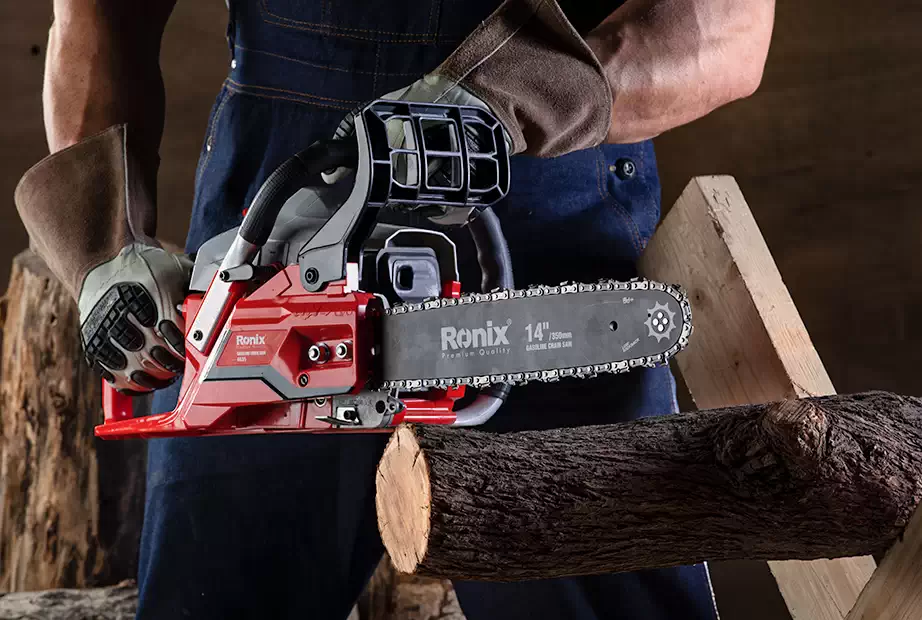
When it comes to making the cut, you should always hold the saw with both hands and keep your body to the left of the chain line. Consider stopping the saw every time you need to change your position.
When not using the saw, cover the chain brake and blade:
When not in use, you should store your chainsaw in a safe and dry place and cover the chain brake and blade to prevent any injury and damage.
How To Use a Chainsaw Safely?
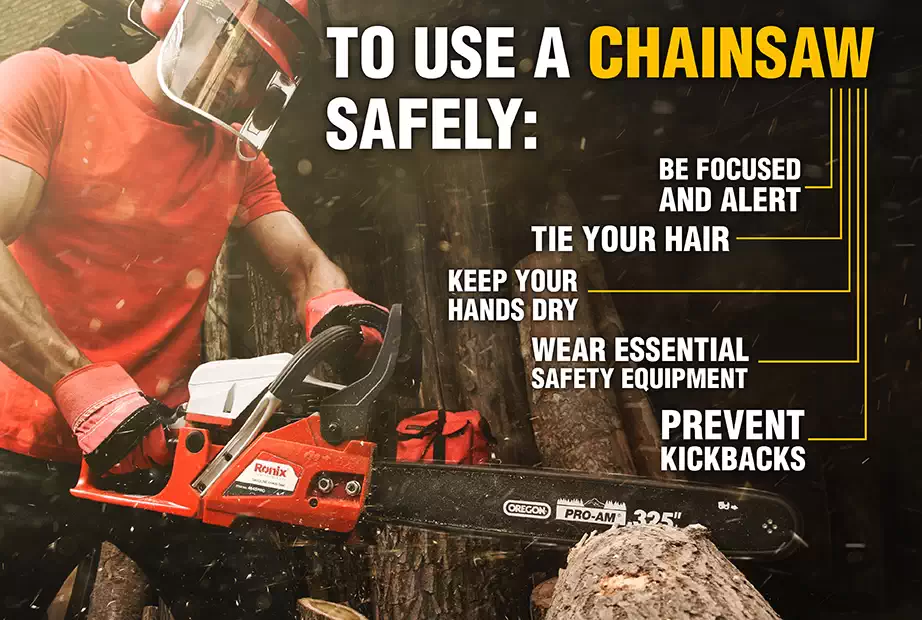
To ensure your safety, never use a chainsaw when you are sick, tired and not focused, or the lighting at the work site is not adequate.
For a risk-free chainsaw use, tie your hair up and keep your hands dry! You should also avoid using these power tools near electrical cables or power lines.
Keep in mind that a safe chainsaw is securely assembled and all its safety attachments are properly installed. Such a tool is not damaged or maladjusted.
The instruction to use a chainsaw safely continues as such:
Gear Up for Safety
While using a chainsaw, you should arm yourself with all the essential personal protective equipment including:
- Eye protection: Protect your eyes from flying wood chips by wearing safety glasses.
- Hearing protection: As chainsaws make a lot of noise while in action, wearing ear protection is a must.
- Head protection: Always wear a quality safety helmet to protect your head from injuries caused by falling trees or branches.
- Hand protection: Wearing appropriate work gloves while using a chainsaw can protect your hands from cuts and vibration and improve your control and grip on the tool.
Prevent Kickback
Chainsaw Kickbacks can cause serious injuries to the user and anyone nearby. To reduce the risk of kickbacks, there are many things you can do:
First, do not let the tip of the guide bar touch anything while in motion. Second, avoid operating the tool with one hand and always maintain a steady cutting speed. You can always use low-kickback chains as a precaution.
Chainsaw Uses
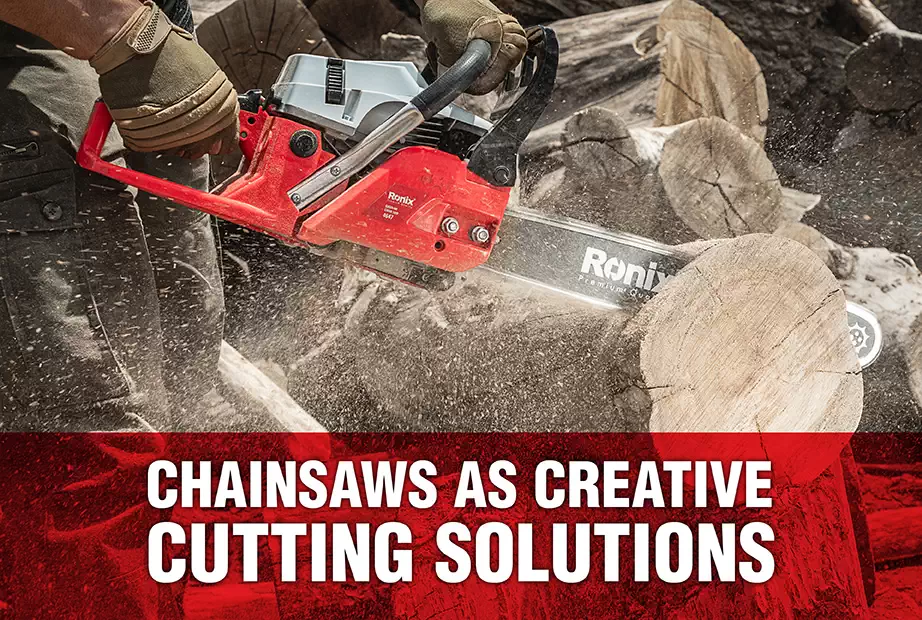
Unlike what most people believe, the chainsaw uses go beyond felling trees and chopping wood. This versatile power tool can also be used for cutting meat and bones, ice, weed and even plastic!
Meat and Bones
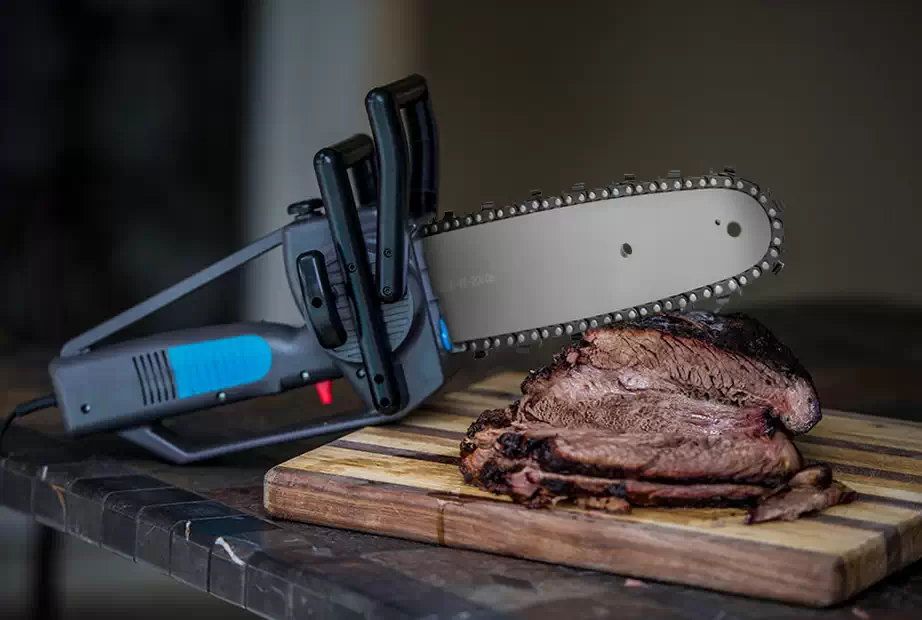
Chainsaws were first made by a German physician called Andreas Stihl in the 18th century for medical purposes, including amputations. Although today there are many more advanced tools and technologies used in this field, chainsaws can still be used to perform surgical cuts. If sharp enough, these power tools can be also of use to hunters.
Ice
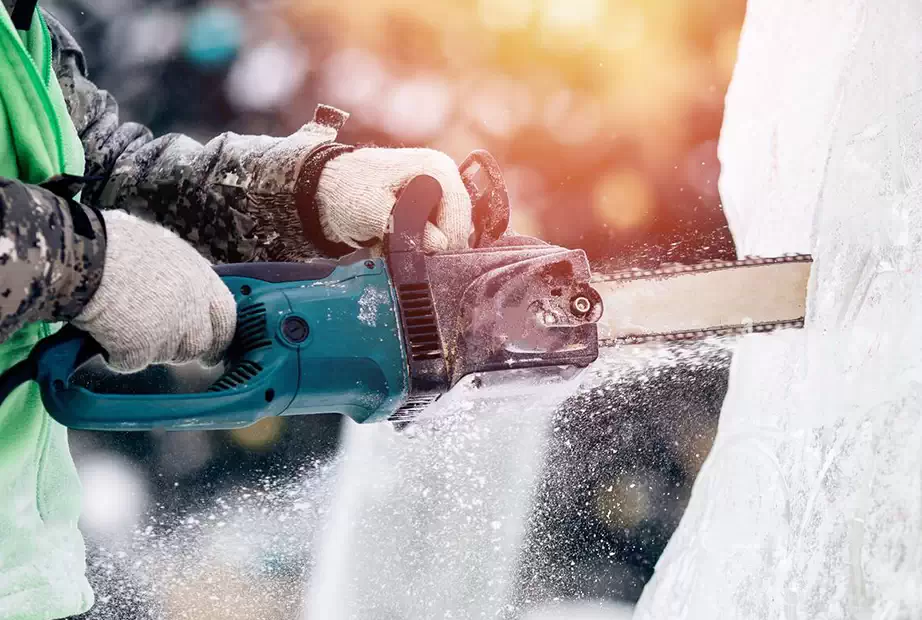
Cutting ice is yet another interesting use of a chainsaw. If you plan to go fishing on a frozen lake and need an easy and fast solution to get rid of the ice, an ergonomic and sharp chainsaw that comes with non-slip grips can make the job easier and much more enjoyable.
Chainsaws are also a great choice for those interested in the art of Ice sculpting!
Weed
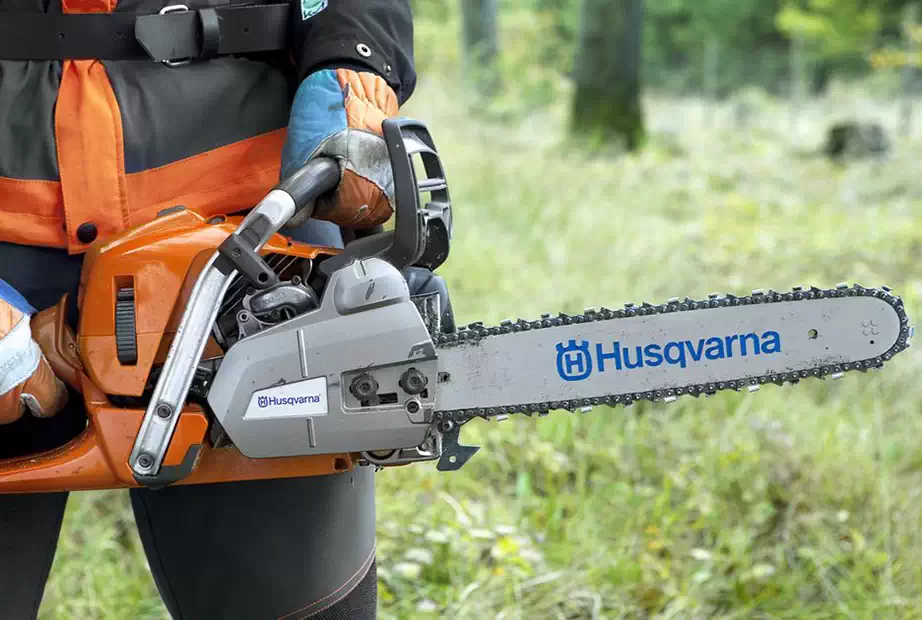
After wearing all the essential safety equipment and following the safety guidelines, you can use chainsaws to clear vegetation from bushy weeds and dead wood which is essential for improving the crop yield.
Plastic
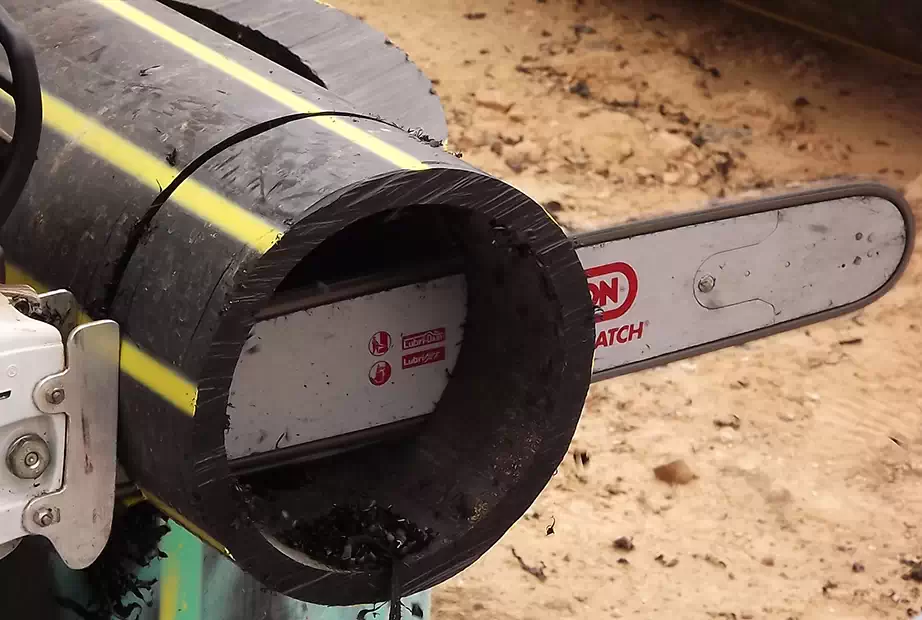
With the right technique and a chain specifically designed for cutting plastic, you can use a chainsaw to effectively cut through different types of plastic like polyethylene and PVC.
FAQ❓
How To Operate a Chainsaw?
Always begin by wearing essential safety equipment. Then take a proper stand in front of the workpiece and start the motor. Before anything, activate the chain brake and pull the choke lever out. After pressing the oil feeder a few times, the fuel becomes visible and then you can put the saw on a firm and flat surface and pull the starter handle with the right hand. Let the chainsaw warm up for 30-60 seconds and then release the chain brake. Hold the saw with both hands and keep your body to the left of the chain line. Consider stopping the saw every time you need to change your position.
Can You Use a Chainsaw in The Rain?
Five-star gasoline chainsaws like Ronix 4647 can be used in light rain once in a while but don’t push it too far because water can penetrate the tool and cause corrosion in the long run. Heavy rain can also make the tool slippery and increase the risk of accidents. So, you’ve got to be cautious!
Can You Chainsaw Wet Wood?
Chainsaw wet wood is possible but still harder and more dangerous than cutting through dry timbers.

Ronix
28 February 2021
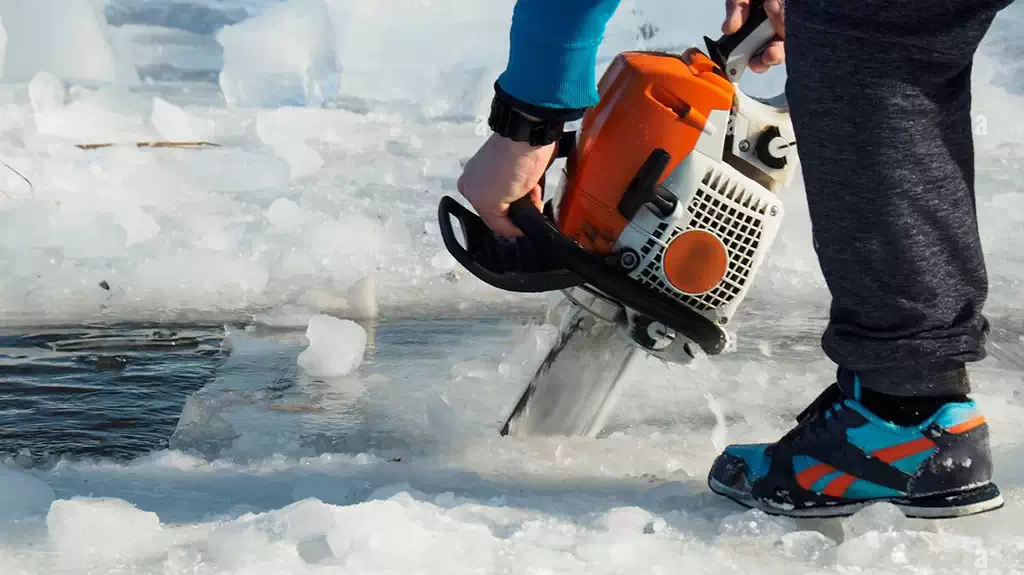



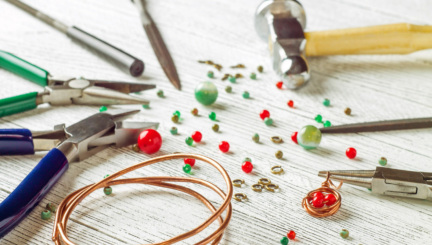


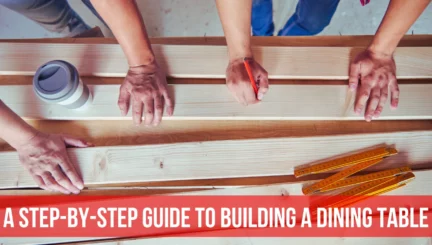

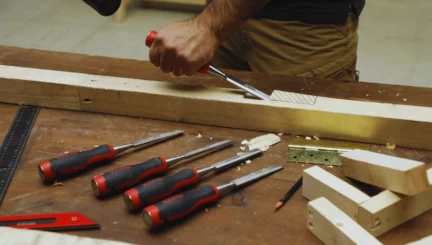
Thank you so much.